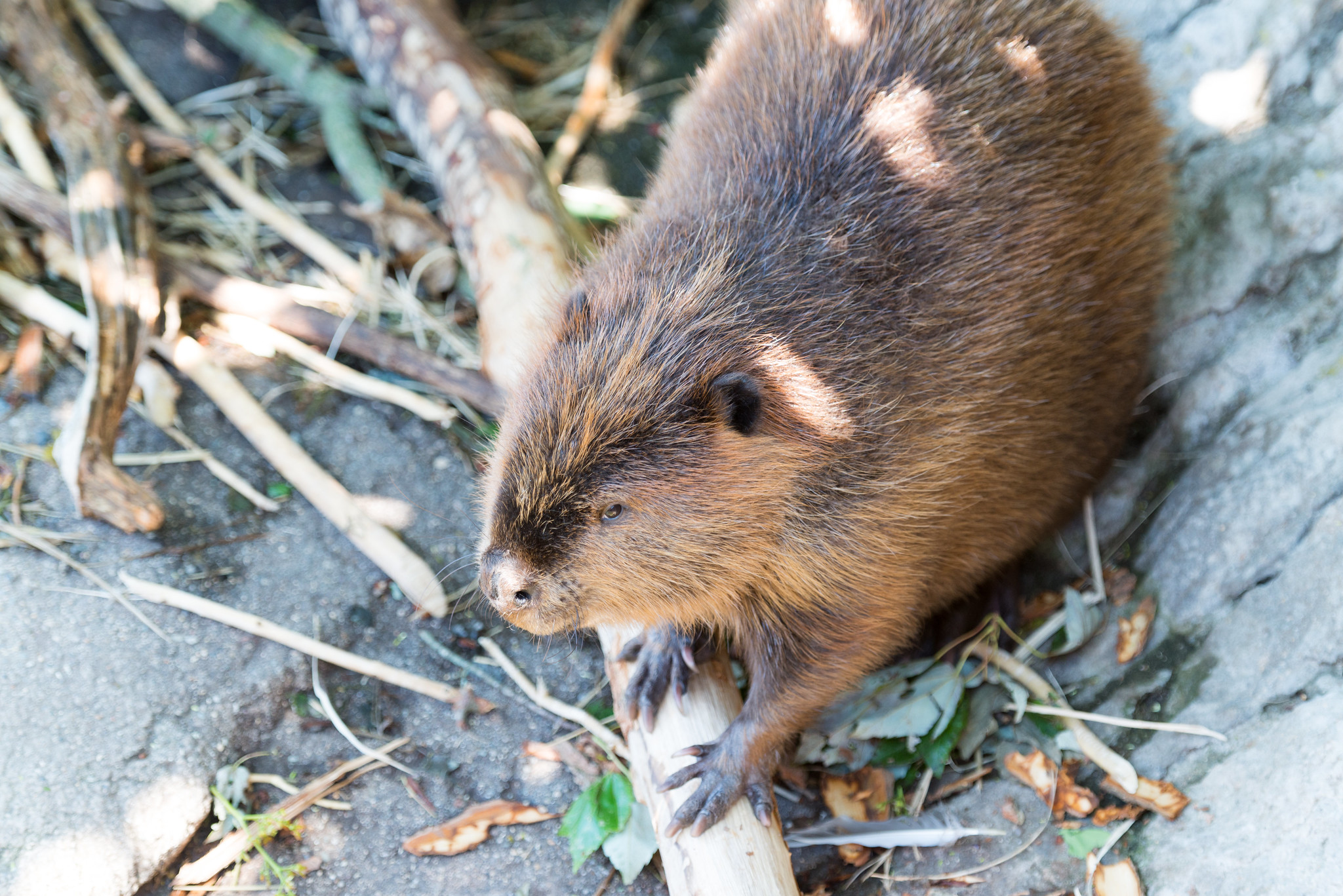Learn
by Nancy Steele
June 7, 2021
Last Saturday it was midmorning, and I was nearing the end of my hike at Dead Horse Ranch State Park. I like to walk a circuit that takes in the bird feeders, the river trail, and all three ponds. But now I was looking forward to getting into my car and driving home. We’d seen a Common Black Hawk near the River and a Bald Eagle sitting high above in the cliffs, so it had been a good walk.
As we came upon pond 1, though, my husband pointed to something brown near the edge and said it looked like a dead otter in the murky water. Then we both noticed eyes looking at us from the still form. We came to the same realization. This was a living animal. It looked a lot like a beaver. But beavers are only out at night! And they are only in pond 3!
As we watched, though, the brown animal turned and began swimming. It had a classic beaver body and exhibited decidedly beaver-ish behavior when it turned to dive, slapping its tail on the water. It was, we both agreed, a peak wildlife experience. My first Verde beaver!
This is the kind of experience I’ve come to treasure here in the Verde Valley. If we spend any time outside, we all have them. Maybe you’ve seen an otter while boating on the Verde or hiking along Sycamore Creek. Maybe a Cardinal sang to you from the top of a tree. Or maybe you saw a family of javelinas crossing the road as you were driving to work.
While Arizona might be best known for its iconic Sonoran Desert and saguaro cacti, you and I know another side of Arizona. Arizona has rivers and lakes. And where there is water, there is wildlife.
If you look at a map of Arizona, you’ll see many blue lines describing rivers. Their names evoke a time when Arizona was wetter. San Pedro, Hassayampa, Gila, Agua Fria, Santa Cruz, Salt, Verde, Little Colorado, and more. Some of these rivers no longer flow year-round. Some of these are washes and flow only after heavy rain. The Verde River, found in the center of Arizona, is that rare Arizona river that still exists and still flows, year-round.
This is the first of a regular column about all things Verde. I work for the Friends of the Verde River, a nonprofit incorporated in Cottonwood ten years ago. Through this column, I, and others who love the Verde, will tell stories to inspire and inform you. These stories will be about the Verde River system.
The Verde River is not just one river, you see, but a collection of rivers, creeks, lakes, and springs encompassing some 587 river miles in 6,600 square miles of land area. The highest point in the Verde system is Humphrey’s Peak at 12,617 ft and the lowest point is at 1,323 feet, where the Verde meets the Salt River near Phoenix. The system extends to the Hualapai Reservation in the north and includes parts of Prescott and Payson on the west and east. It is very diverse.
But since this is the first column, here is a little bit about me. I was born in Phoenix, at the old Good Samaritan Hospital, delivered by my grandfather’s best friend who also became my godfather. I went to Madison No. 2 and Camelback High School, played flute in the band, and attended church on Sundays. I was fortunate in growing up in the same city with both sets of grandparents, aunts and uncles, and many cousins.
When it came time to select a college, though, I had been captivated by the ocean and went west to Occidental College. I earned a master’s degree in zoology from ASU and a doctorate in environmental science & engineering from UCLA. I lived and worked in LA for 40 years, always coming back to Arizona to visit family and enjoy our wild places. The Grand Canyon and Sedona have long been my touchpoints.
I earned my living through environmental work and leading nonprofit groups focused on nature. I founded a land trust twenty years ago and later led an organization focused on the health of the Los Angeles & San Gabriel Rivers for ten years.
In 2018, though, I was tugged back to Arizona by an opportunity that I couldn’t pass up, to lead the Friends of the Verde River. In Los Angeles, I had worked for rivers that were highly engineered and managed for flood control and water supply. What an opportunity to work for a river like the Verde!
Friends of the Verde River is a nonprofit that works, with many partners, for a healthy, flowing Verde River and all of its tributaries. We believe that a healthy, flowing Verde supports vibrant communities. And healthy communities are necessary for the Verde to survive.
As I write these columns, I invite you to join me in learning about what flowing, healthy rivers and creeks mean to us as we explore this most valuable waterway. Let’s explore the diversity of the Verde River system, together!
Dr. Nancy L.C. Steele
Executive Director
Friends of the Verde River
Photo: American Beaver by Eric Kilby






